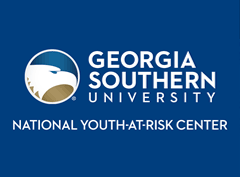Bridges: A Public School Program for At-Risk Youth with Disabilities
Location
Urban Strand - Navarro
Focused Area
Improving School Climate for Youth-At-Risk
Relevance to Focused Area
The Bridges Program provides a positive climate and education and social/emotional/behavioral supports and interventions in a school setting for students who have had unsuccessful and negative experiences in public schools, have been suspended from public schools, and have been involved with the juvenile court system.
Primary Strand
Academic Achievement & School Leadership
Relevance to Primary Strand
The Bridges Program features small classes, social/emotional/behavioral supports, online learning, and high staffing levels that enable student to access academic interventions and instruction to meet their high school graduation requirements in the program or to return to their home school to do so.
Brief Program Description
The presentation will provide information about the Special School District of St. Louis County and its programs, services, and populations served. Additional information will describe needs identified for at-risk youth with disabilities and the techniques and supports utilized by the Bridges Program to meet those needs, along with student outcomes, to a target audience of school administrators.
Summary
The Special School District of St. Louis County is mandated to provide special education and related services to children and youth living in St. Louis County, Missouri. The County surrounds the City of St. Louis and includes an "inner ring" of suburbs (for example, Ferguson) with a high percentage of students identifying as ethnic minorities and belonging to single parent and/or low-income families. In addition, this population of students includes those with social/emotional/behavior concerns that are untreated due to inability or other failure to access mental health services. As a result, these students demonstrate criminal activity, abuse of chemicals, challenging behaviors in school leading to suspension or expulsion, and lack of family engagement in schooling. Most have a history of problems in school and are below their grade level in academic performance. The Bridges Program is designed to meet the special education needs of these students and support them to graduate from high school through individualized instruction, social work and therapeutic support, networking with court personnel, and other interventions when needed. Students may participate in individualized on-line learning to recover lost high school credits to earn new credits as well as group classroom instruction. Staff emphasize building positive personal relationships with students and their families while providing informal mentoring. The total program, providing academic and social/emotional/behavioral support, leads to students remaining in school and working toward graduation.
Evidence
1. One of the goals of the Bridges program is to provide social behavioral skills and coping mechanisms that allow the student to return to the Least Restrictive Environment (LRE) 37% of Bridges students returned to LRE or graduated during 2013-2014.
2. The IEP is the student’s main plan for addressing special needs. Over half, 56.3%, of students made progress or met Social Emotional IEP Goals .
2.An average of 0.85 credits were earned per student.
The Bridges Program was originally based in part upon United State Census Data from 2000, showing drastic increases from 1990 in the number of single-parent households with children (23% increase) and a poverty rate of 6.9%. A Comparison Study performed in 2005-60 by the Family Court of St. Louis County showed that juvenile justice programs have not resulted in significant reductions in the number of juvenile offenders - these offenders are active in their community, or, if detained, return to their communities upon release. To address these issues, the Bridges Program operates from two philosophies: Character Education, as outlined by Dr. Marvin Berkowitz from University of Missouri-St. Louis, and Positive Behavior Interventions and Supports (PBIS).
Format
Individual Presentation
Biographical Sketch
Paul Bauer earned his Doctor of Education at Southern Illinois University-Edwardsville, and his Bachelor's and Master's Degrees at St. Louis University. During his career, he has been a teacher and administrator in public schools, in public special education programs, and in private residential treatment programs for children and youth with emotional disturbance or with developmental disabilities. He is currently Assistant Superintendent at the Special School District of St. Louis County
Wendi Pendergrass earned her Bachelor's Degree at Lindenwood University and currently has ABD status there. She continues as a part-time instructor at Lindenwood. She has been a teacher and administrator at Special School District of St. Louis County, and is a past Principal of the Bridges Program. She is currently the Executive Director of Schools at the Special School District.
Start Date
10-24-2016 1:00 PM
End Date
10-24-2016 3:30 PM
Recommended Citation
Bauer, Paul W. and Pendergrass, Wendi, "Bridges: A Public School Program for At-Risk Youth with Disabilities" (2016). National Youth-At-Risk Conference, West (2015-2017). 5.
https://digitalcommons.georgiasouthern.edu/nyar_vegas/2016/urban/5
Bridges: A Public School Program for At-Risk Youth with Disabilities
Urban Strand - Navarro
The presentation will provide information about the Special School District of St. Louis County and its programs, services, and populations served. Additional information will describe needs identified for at-risk youth with disabilities and the techniques and supports utilized by the Bridges Program to meet those needs, along with student outcomes, to a target audience of school administrators.
